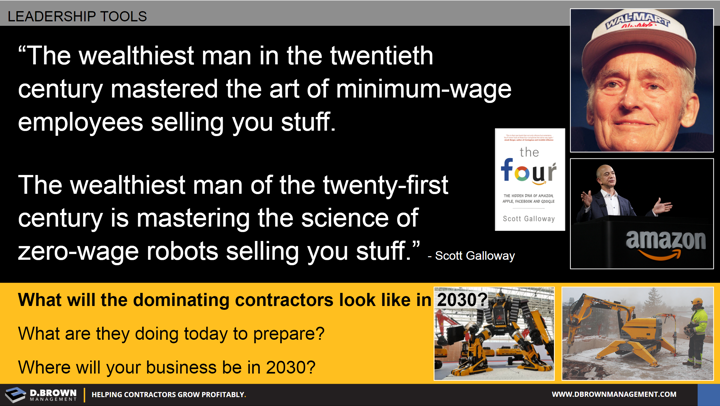All industries throughout history that have had any sort of technology disruption including standardization such as the shipping container have also faced major shifts in focus from front-line labor to capital, engineering and management.
Leader of construction companies need to learn from the past and plan for their futures. Some good places to start:
ENR / Robotics - see what’s currently going on in our industry.
Tesla’s Model 3 Factory - they pushed for total automation and were a little ahead of the curve. They had to un-automate some things - but it is better than being behind the curve.
The Box - how hard front-line labor can fight back against change.
The Future of Leadership: Rise of Automation, Robotics and Artificial Intelligence
The Rise of the Robots - how a futurist sees this playing out.
The Four - major tech companies and their models.
The Everything Store - Amazon’s business practices are worth looking at along with their technology
We help contractors build stronger businesses for the next generation by leveraging talent, technology and transparency through alignment and transparency.

